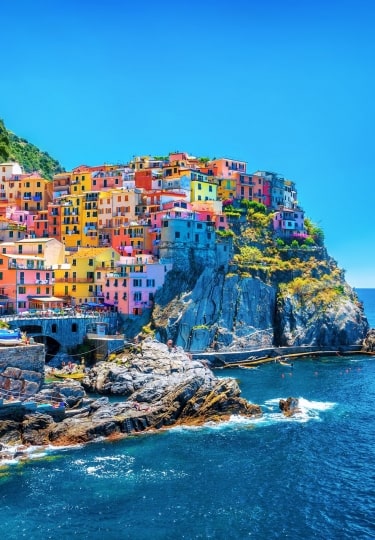Italy in the summer is magical, from the pop of the buildings’ pastel shades and the allure of the ocean rippling at the end of steep village lanes to the silhouetted belltowers tolling against a crisp blue sky.
Summer in Italy is the time of year when this country turns from fantasy into fantastic reality—even the gelato tastes brighter. Here are the essential things to do in the sun-splashed Italian summertime.
Taste Wine in Sorrento
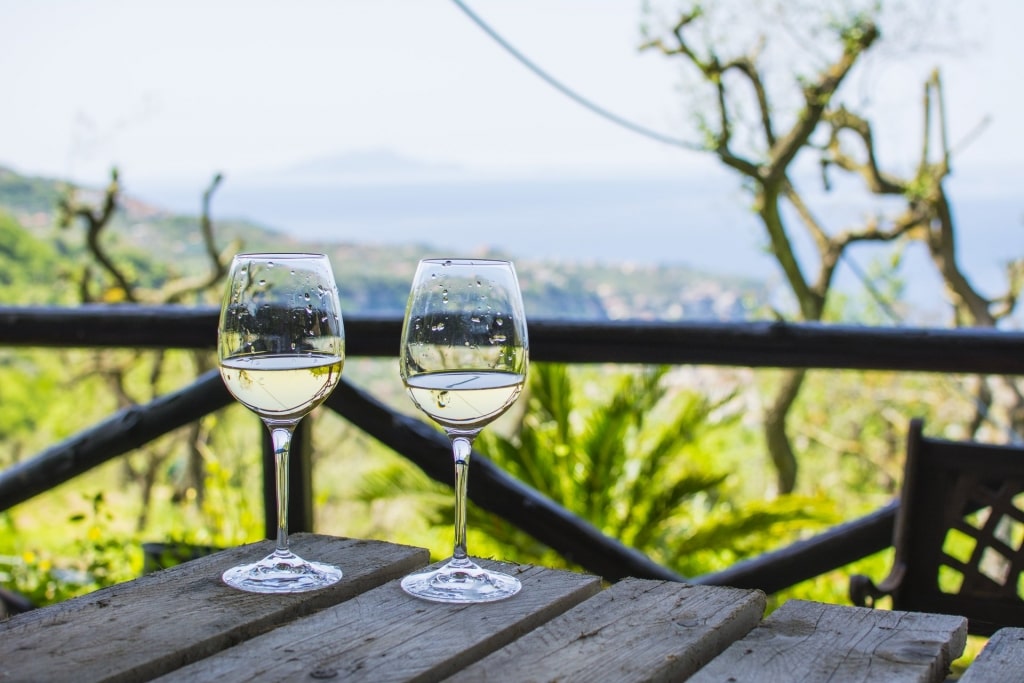
Sorrento
A resort town positioned on the spectacular Amalfi Coast, Sorrento is a word synonymous with summery Italian glamor. Positioned on its own craggy peninsula jutting into the Bay of Naples, Sorrento has long been visited by those looking for a memorable coastal escape. It’s also famous for its lemons and zesty limoncello production.
Less well known, however, is that the area also produces superb wines—the perfect accompaniment for Sorrento’s restaurant terraces’ far-reaching views.
Sorrento, one of the most beautiful cities in Italy, is hemmed in by nearby vineyards, their grapes taking advantage of the blissful Italian climate. Some vines also have their roots plunged into the rich volcanic soil of Vesuvius, making for an irresistible vinification combination. A wine not to miss is Lacryma Christi—a blend that archaeologists have proven is the closest modern equivalent to what the Ancient Romans would have uncorked.
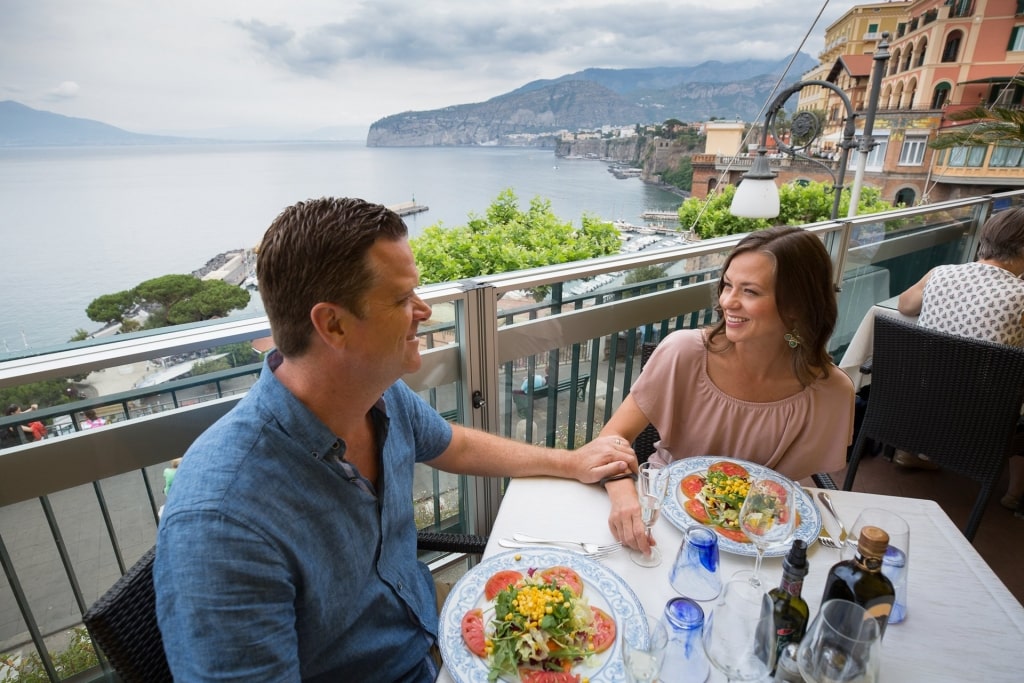
Sorrento
Sample it at the source with a vineyard tour or while touring the town. Afterward, browse the stylish Italian tailoring in Corso Italia’s boutiques while you soak up the laid-back atmosphere of Sorrento. Find your way through its colorful cobblestoned backstreets to the volcanic beaches and the cool shimmering sea.
Go for a Gondola Ride in Venice
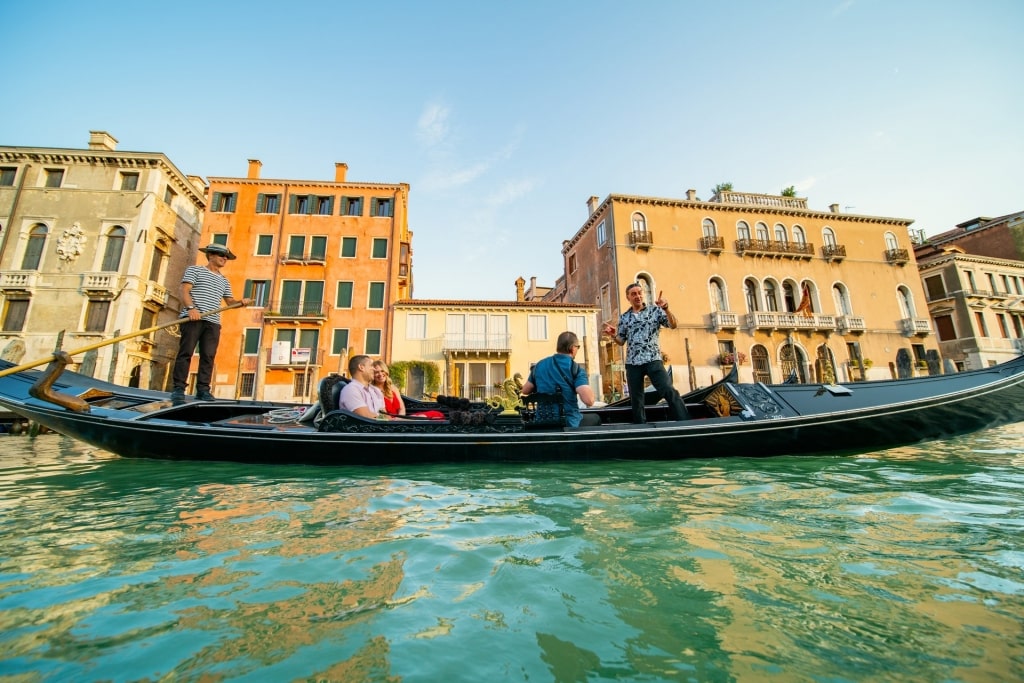
Gondola ride in Venice
Summer in Italy gets hot, so it’s best to always be near water. That’s easy advice to follow with Italy’s nearly 5,000 miles of coastline, but especially so in Venice, also known as ‘The Floating City’. Criss-crossed with a web of canals, the traditional method of navigating Italy’s most romantic destination is by gondola.
With the idea of romance so long entangled with this Venetian vessel, it can seem that gondolas were purpose-built for intimate cruises through serene waterways. Actually, these handsome crafts have been in existence since at least the 11th century. Their uses throughout history have been as eclectic as any humble rowing boat, while a team of gondoliers would have propelled the craft rather than a solo oarsman as there is today.
Being gently oared through this historic city on an elegant curving boat is a recipe for being lulled into a state of extreme well-being—little wonder a gondola ride has become seen as the apogee of romance in Western Europe. Throw in the gondolier’s Italian serenade and a rosy sunset, and you might consider emigrating.
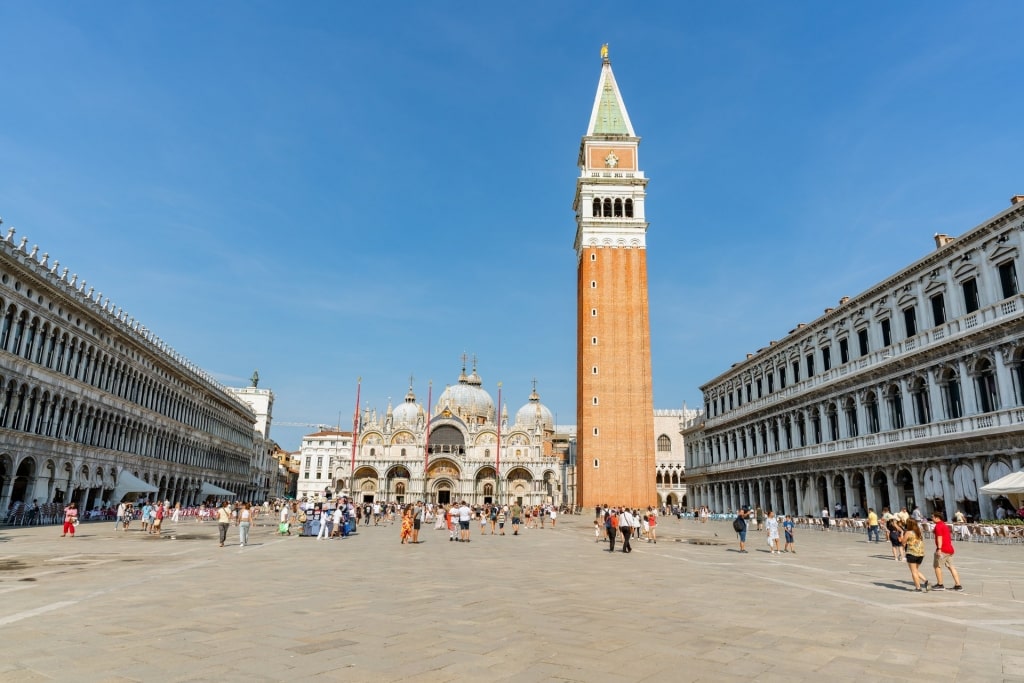
St. Mark’s Square, Venice
While there are few experiences that match touring this city by the water, be sure to leave the gondola at least long enough to find your way to St. Mark’s Square. This centerpiece of the city is bordered on one side by the extraordinary basilica of the same name, which is the symbol of this once-mighty empire’s wealth and pomp. At night, classical quartets serenade diners. It’s one of the more blissful evenings available in Italy in the summer.
Read: One Day in Venice
Tour Trieste on Foot
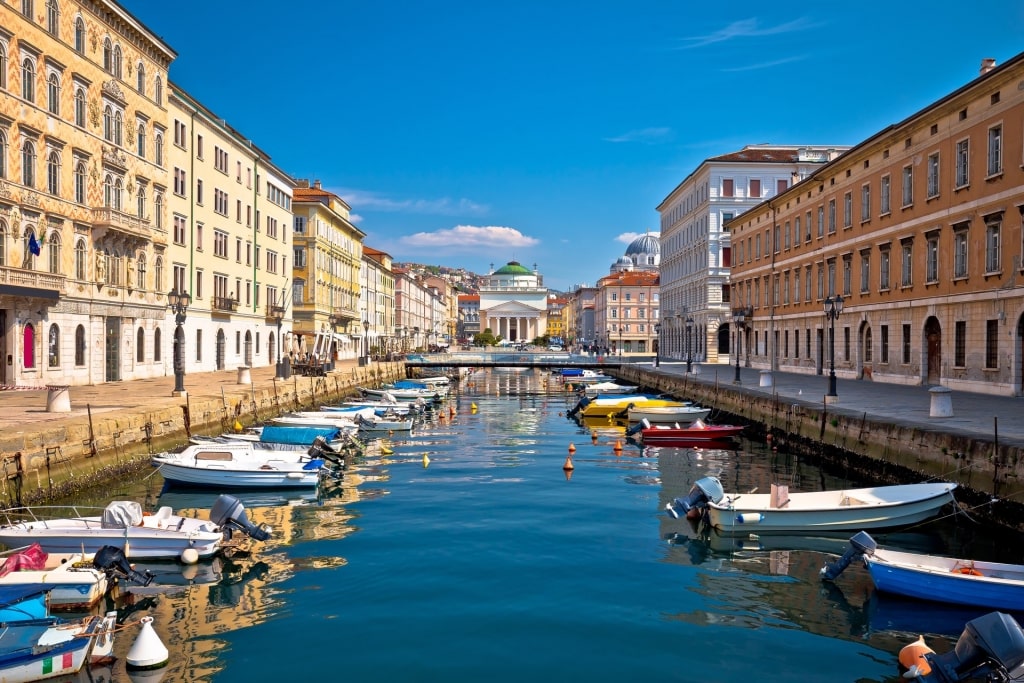
Trieste
One of Italy’s best cities during the hot months (and the cold), Trieste offers impressive architecture, intriguing culture, and cool breezes drifting in off of the cerulean Adriatic Sea.
A key port for the Austro-Hungarian Empire, cosmopolitan Trieste, one of the most underrated cities in Europe, is located at the very edge of Italy’s northeastern border. Its culture is a weave of Italy, Slovenia, Croatia, and Austria, and you’ll find that unique footprint in its food and language, too.
Trieste is also a famous literary town. The Irish literary titan James Joyce enjoyed a 15-year stint in residence here. When he wasn’t drinking Spritz Venezianos and taking in boat races on the Gulf of Trieste, he was probably brooding in the majestic cafes. The city still has these grand, Vienna-style meeting spots for writers and intellectuals, which are still wonderful places to shelter from the sun and have your caffeine fix.
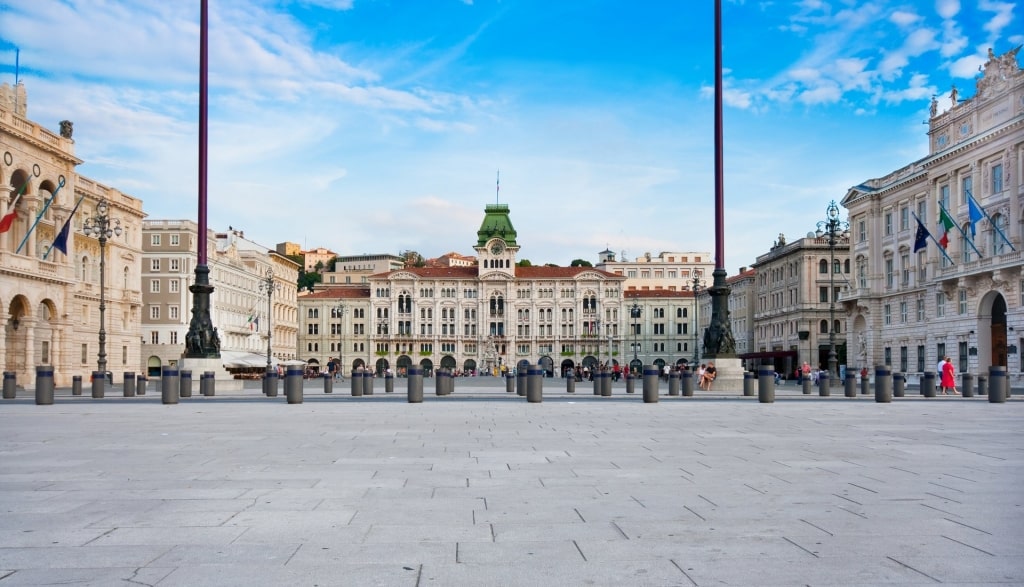
Piazza Dell’Unità, Trieste
With relatively few staircases to climb compared to other Italian cities (visits to the Faro della Vittoria lighthouse excepted), Trieste’s grand Austro-Hungarian avenues and its majestic Piazza Dell’Unità are a cinch to tour.
Best of all is the gleaming waterfront, the billowing sails of a yacht race catching the sun, and the glow of Aperol spritzes beneath the shady pines. Trieste might be a border town, but this is Italy in the summer through and through.
Read: Best Things to Do in Trieste
Explore Matera’s Medieval Alleyways
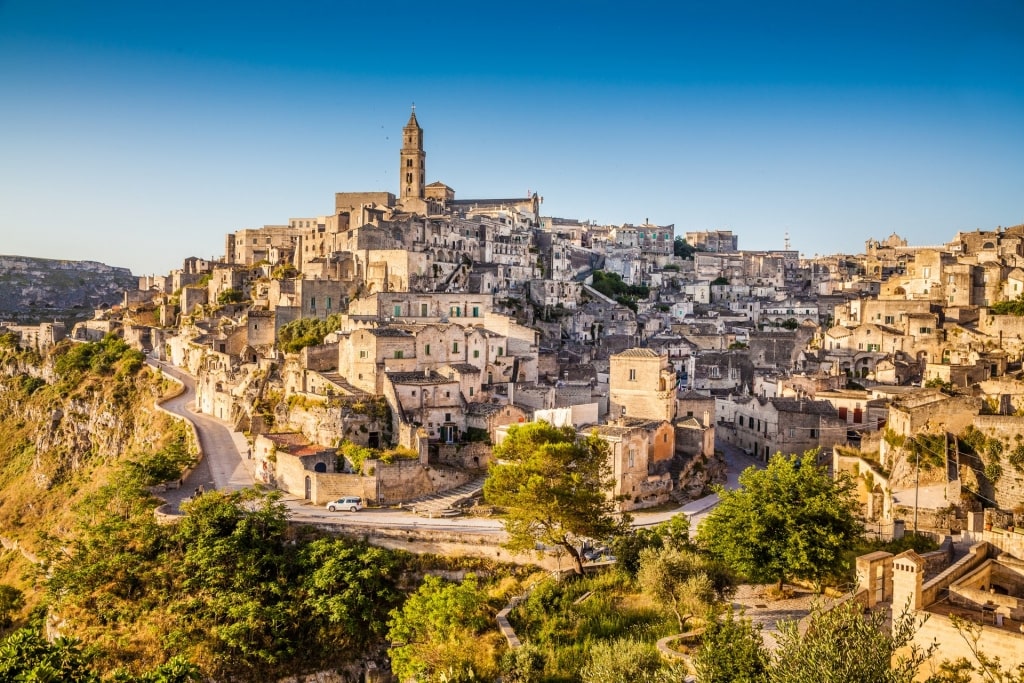
Sassi di Matera
Matera feels truly ancient. This Italian city found in the ankle spot of the Italian boot is one of the world’s longest continuously inhabited settlements. It’s no surprise when you see it in person—the city proper sited on a gorge pockmarked with doorways into the rock.
These doorways mark the Sassi, which are cave-homes carved into the limestone. Matera was once infamous for these almost neolithic cave-dwellings that, despite some remarkable Renaissance-era stonework, were sites of extreme poverty. The crisis was addressed in 1953 when the Sassi’s population of 16,000 were rehoused in another part of the city.
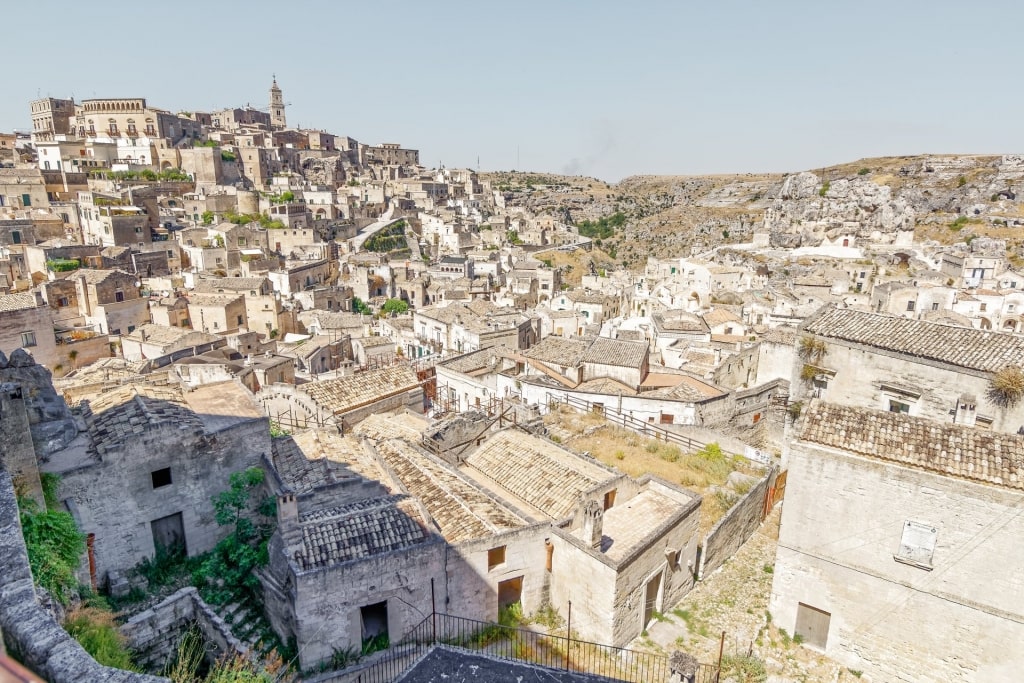
Casa-Grotta di Vico Solitario, Matera
Matera has since become a UNESCO World Heritage Site. Last year, its renaissance was completed with a turn as the EU Capital of Culture (it’s also become the location of a significant international literary festival). As for the Sassi, you can explore what life was like in these (without the livestock) in painstaking recreations such as that of Casa-Grotta di Vico Solitario.
Once you’re finished underground, it’s time to wander the timeless streets that Italy is known for. Matera offers a honey-colored maze of stairways and piazzas to explore, many with striking views across the sun-baked Mediterranean landscape. Get there quick before the city tops everyone’s must-see list when in southern Italy in the summer.
Read: Insider’s Guide to Southern Italy
Feel Olympian at Taormina’s Greek Theatre
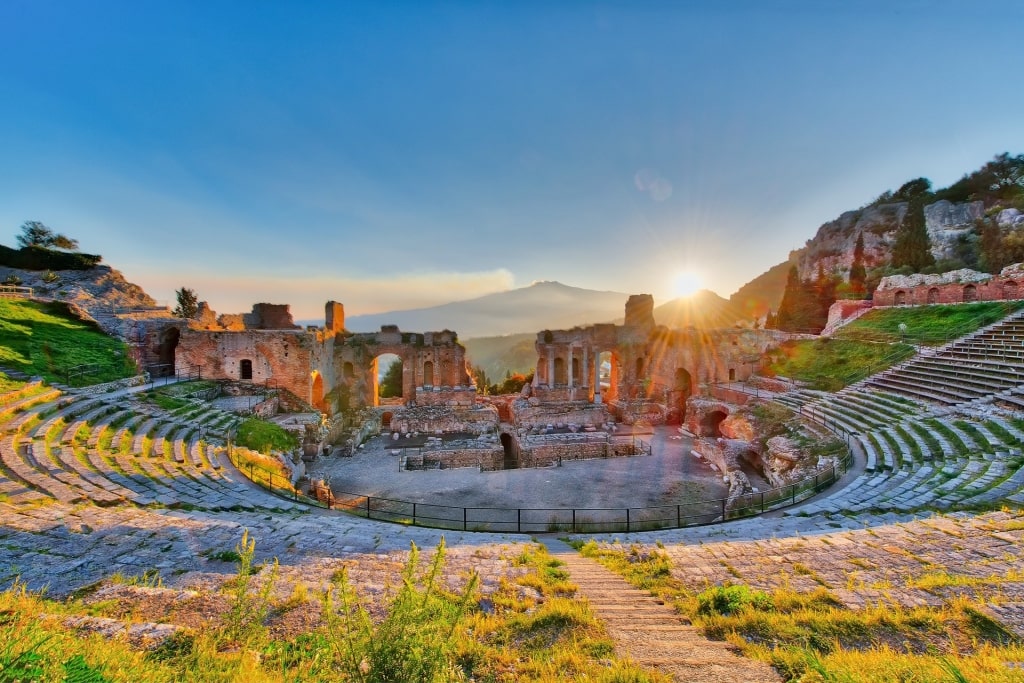
Greek Theatre of Taormina, Sicily
The coastal town of Taormina has long been a bolthole for those seeking a glamorous retreat along the sun-kissed coast of Sicily. A colorful jumble spread in the hills 70 meters above the deep blue Ionian Sea, almost every outlook in Taormina offers spectacular vistas. Some of the best are higher still, in its lofty Greek Theatre.
Carved into the hill-top, the Greek Theatre’s ambiance is akin to that of entering mythical Mount Olympus, making it one of the best places to visit in Sicily. You’re in the clouds, with distant sunshine breaking over the vast gentle slopes of Etna, the sight framed through the theater’s half-ruined stage. If you’re visiting between May and September, be sure to book a once-in-a-lifetime concert sitting in the antique stone seats.
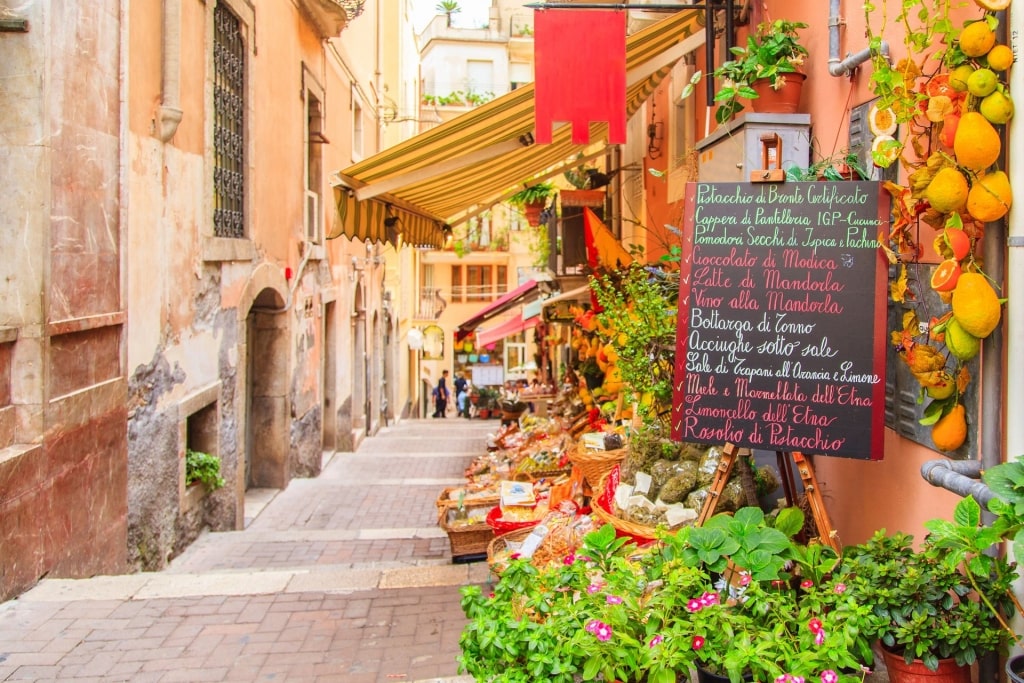
Taormina
Mortal life below in Taormina’s streets isn’t too awful either. It’s a wonderful place to explore its cobbled stairways lined with the scent of orange trees and high-street windows tempting with displays of delicious cannolis. Afterward, soak up the Sicilian summertime in the town’s ancient Piazza IX Aprile, with the swifts riding the updrafts rising from the ocean.
Read: Magical Towns in Sicily to Explore
Find the Perfect Focaccia in Genoa

Focaccia
The city of Genoa sits plum in the middle of the “the Italian Riviera”. During the Belle Époque, summer in Italy was focused on this stretch of rugged hinterland and sandy beaches, with Genoa on most travelers’ itineraries.
It’s easy to see why, as this port city has a fascinating history. Once Italy’s most powerful republic, Genoa was also the birthplace of Christopher Columbus, not to mention its other well-traveled children: focaccia and pesto. It also has a dark heart: within its tall mustard and magenta-colored buildings is one of Europe’s largest medieval centers.
This warren of caruggi (the name for a Genoese alleyway) comprises antique shops, baroque palazzos, and marble-lined cafes, and makes for exquisite exploring. Taste artisan chocolate cast by machines dating back to the 1800s, dip into old shops selling shaving cream by weight, and be amazed by the dazzling frescos brightening up an old pasta shop. While you’re exploring, be sure to taste test the preferred local variety of focaccia bread that’s made with caramelized onions.
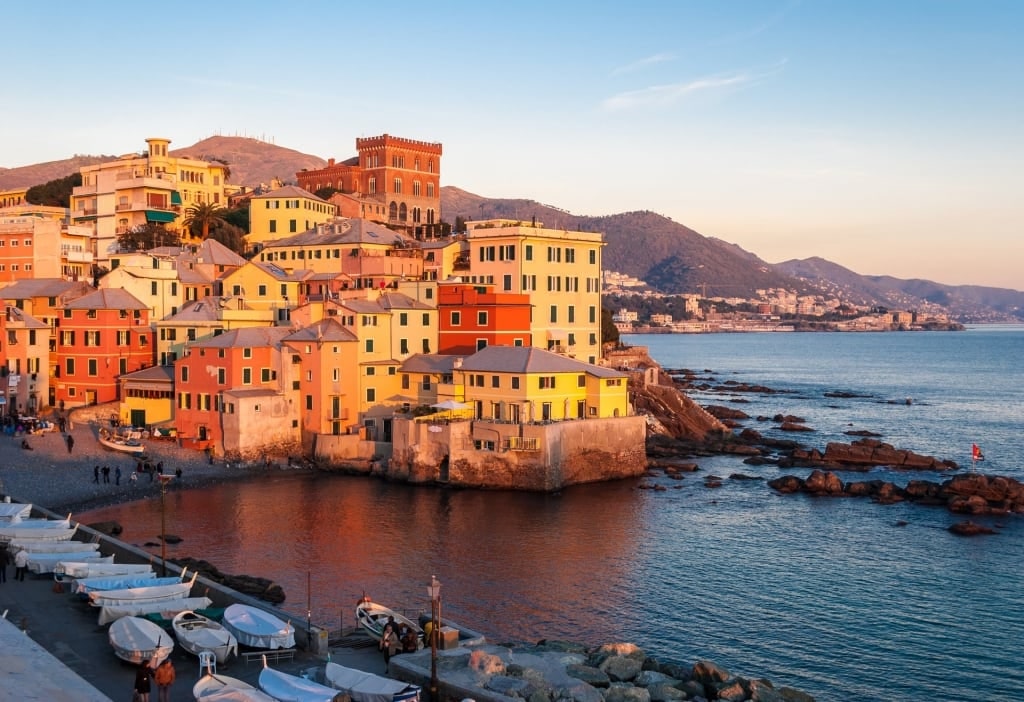
Boccadasse, Genoa
Once you’ve had your fill of the shady streets, follow the seaside promenade down to Boccadasse, a fishing village near the city center. Suddenly, you’re returned to the classic idea of Italian Riviera’s cities with the lapping jade and turquoise waves inviting you for a refreshing wade.
Read: Best Beaches in & Around Genoa, Italy
See the World-Famous Cinque Terre
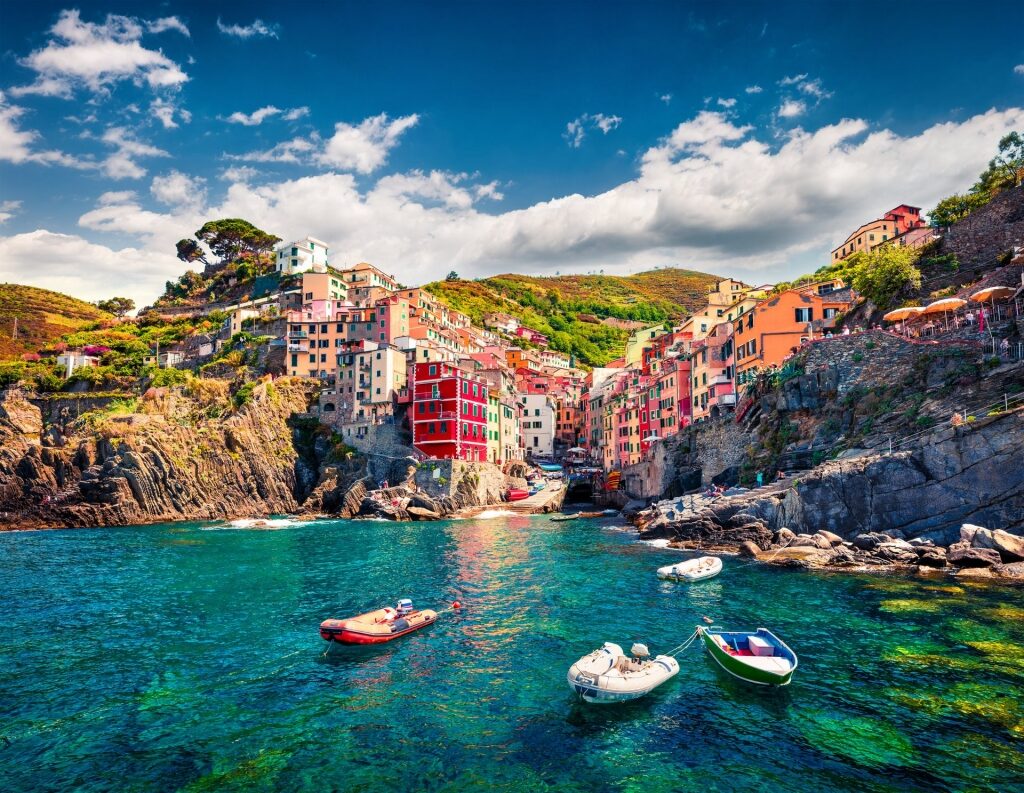
Cinque Terre
It’s a remarkable sight from the ocean—the five fishing villages known as the Cinque Terre, gaily bright while positioned on the imposing cliffs of the Ligurian coast. Now enclosed within a UNESCO-recognized national park, the Cinque Terre offers an exceptional example of what classic Italian architecture does so well: appearing to have sprouted organically out of the landscape on which it sits.
Of course, creating such astonishing architecture on difficult terrain takes time. In the case of the Cinque Terre, these settlements have evolved over the course of nearly a thousand years. Today, each of the villages—like an architectural Spice Girls—has its own style. Monterosso is the flashy resort town; Riomaggiore is a colorful, intimate canyon; and Vernazza, its cliffs strewn with cacti, is the one you might dream of moving to.
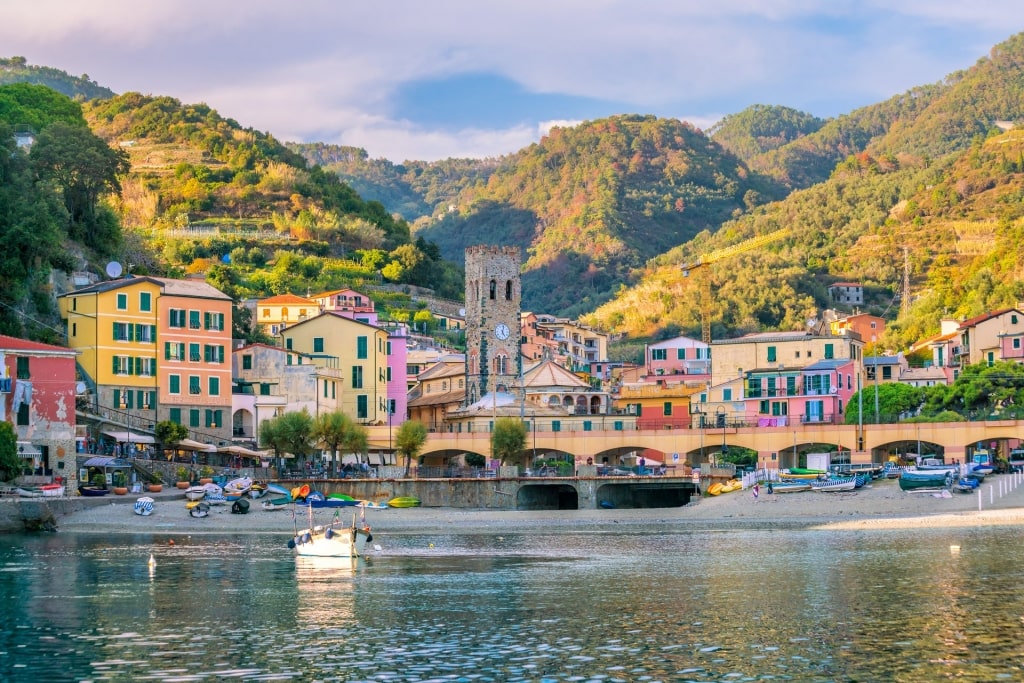
Monterosso
While it’s a fine perspective from the sea, walking it is one of the best things to do in Cinque Terre. Get down into those historic, flower-filled lanes, and discover what life was like among these tiny outposts wedged into this isolated stretch of the Italian Riviera. While you walk the interlinking footpaths, consider how this area had no train line until the unification of Italy towards the end of the 19th century.
Visiting, you’ll find another essential side of Italy in the summer. Once you’ve marveled at the near-vertical vineyards and dense birdsong, make your way to a cafe table beneath a cloud of pink bougainvillea. Sip a glass of chilled Ligurian pinot grigio while you rest your legs, and imagine a life here pushing your fishing boat out of the narrow jetty and onto that calm ocean.
Read: Where to Go This Summer
Get Glam at Capri
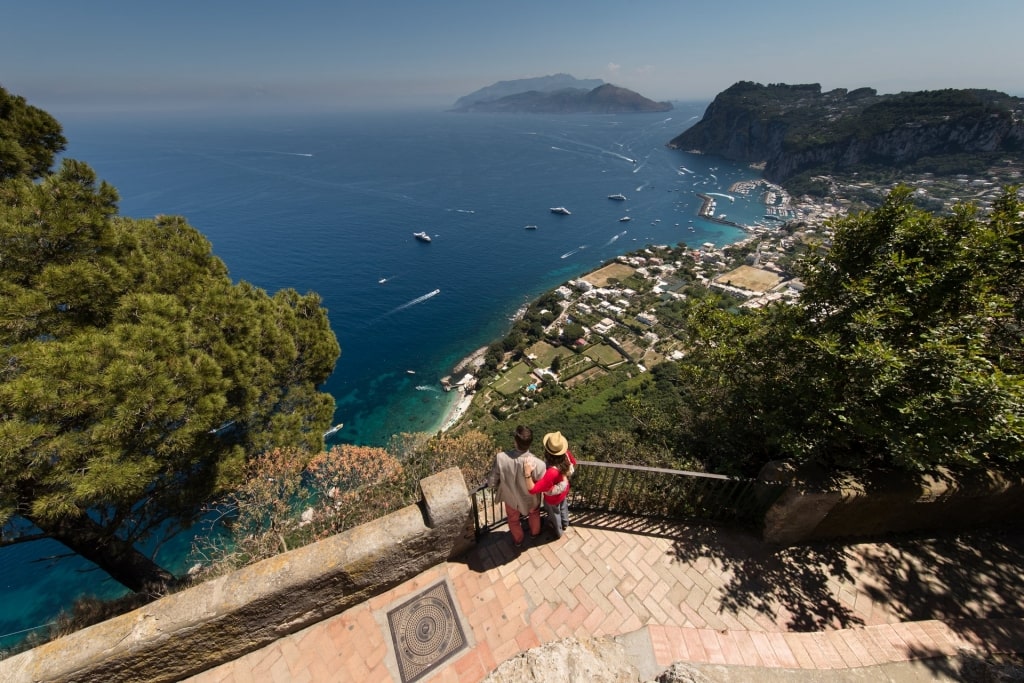
Capri
A stunning projection of limestone rising from the Gulf of Naples, Capri has acquired a reputation as the distillate of Italian glamor. The “Island of Dreams” has attracted Roman Emperors and European Grand Tourists to its turquoise waters and white cliffs. In more recent times, it’s been a magnet for writers, artists, and even Jackie O. The island’s pull is enshrined in myth: it was here, in Homer’s Odyssey, that Odysseus resisted the call of the Sirens by lashing himself to his mast.
Once you arrive, it’s easy to imagine how exasperating it must have been for the Ancient Greek warrior to find himself so bound. The impossibly blue waters insist that you dive in, but probably better to hold off until you’ve arrived on land. As you navigate the switchbacks carved out of the cliffs, you’ll begin to take in Capri’s enchantments.
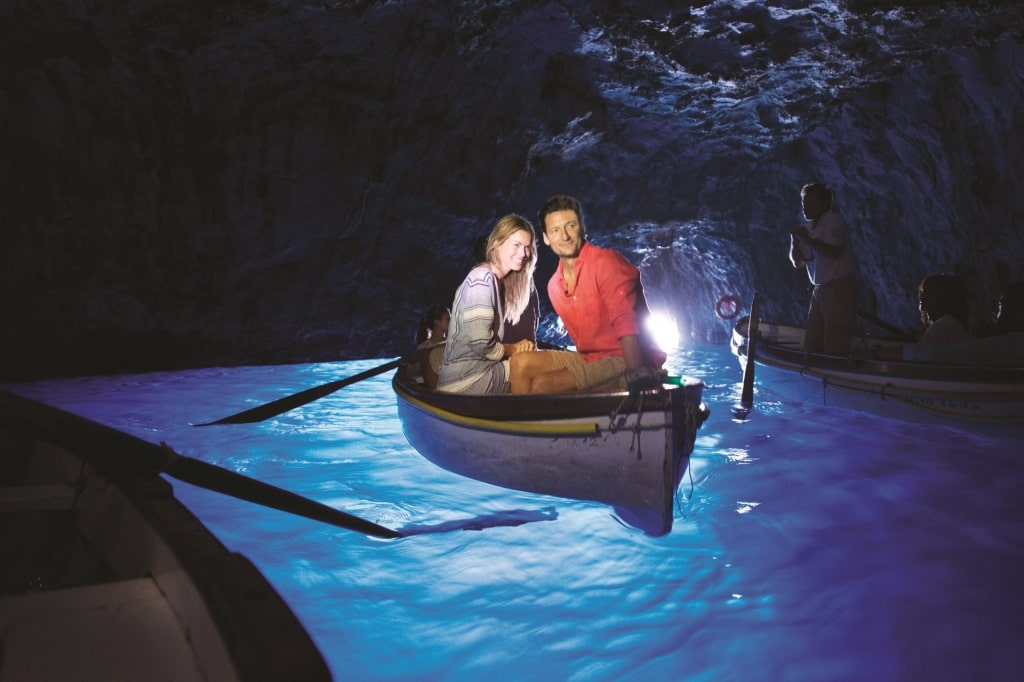
Blue Grotto, Capri
After looking around the lanes of Capri Town, refresh yourself with an Italian feast, the scent of jasmine softening the breeze on your restaurant terrace. Later, give in to that siren call and explore the miraculous meeting of water and limestone that is the island’s fringe. Take a boat to explore the luminous Blue Grotto—one of the best natural wonders in Italy—a sea cave that seems to summarize what makes Capri so captivating: exclusivity, color, and a dash of magic.
Read: Best Beaches in Naples, Italy
Travel Back in Time at Pompeii
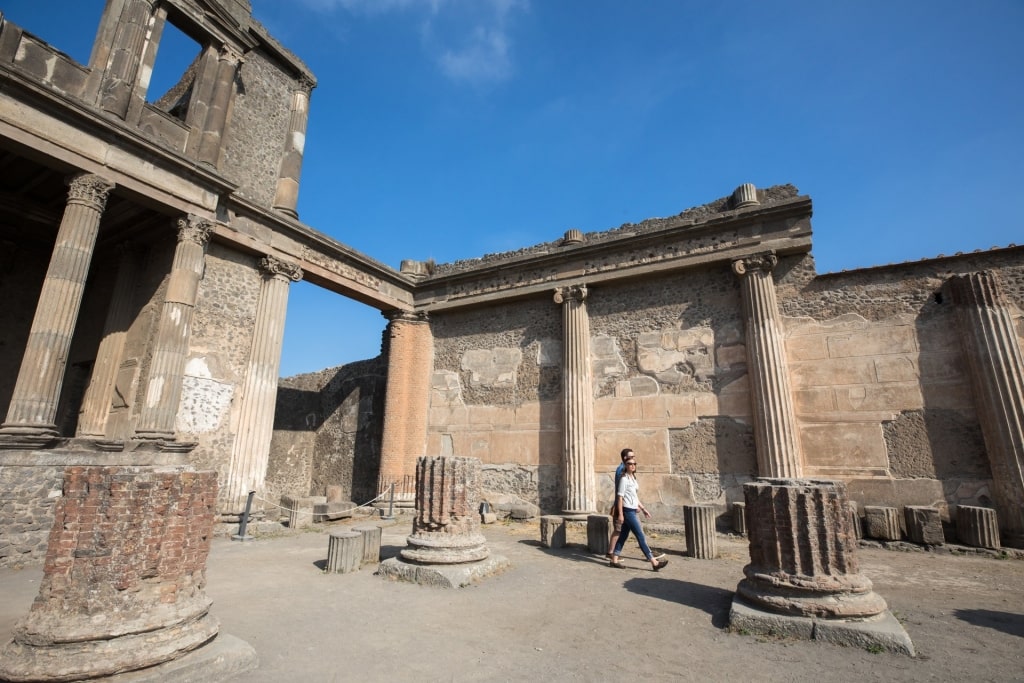
Pompeii
Of the many extraordinary things about the recovered Roman town of Pompeii, one of them has to be its proximity to Naples. The contrast between Naples’ vivid life and ancient Pompeii’s still life is profound.
Profundity is in abundance at this preternaturally preserved Roman habitation. Formerly a well-to-do enclave in the shadow of Mount Vesuvius, it was caught up in a cataclysmic eruption in 79 AD. Such was the suddenness of the event, the town and its people were swiftly buried beneath an avalanche of ash and pumice stones.
It wasn’t re-discovered until the late 1500s when an Italian architect unearthed part of the town while excavating a canal way. However, it was 200 years later that a concerted effort was made to raise it back up to the sunlight. Today, over 100 acres of this Italian landmark have been unearthed, with roughly a third still being explored.
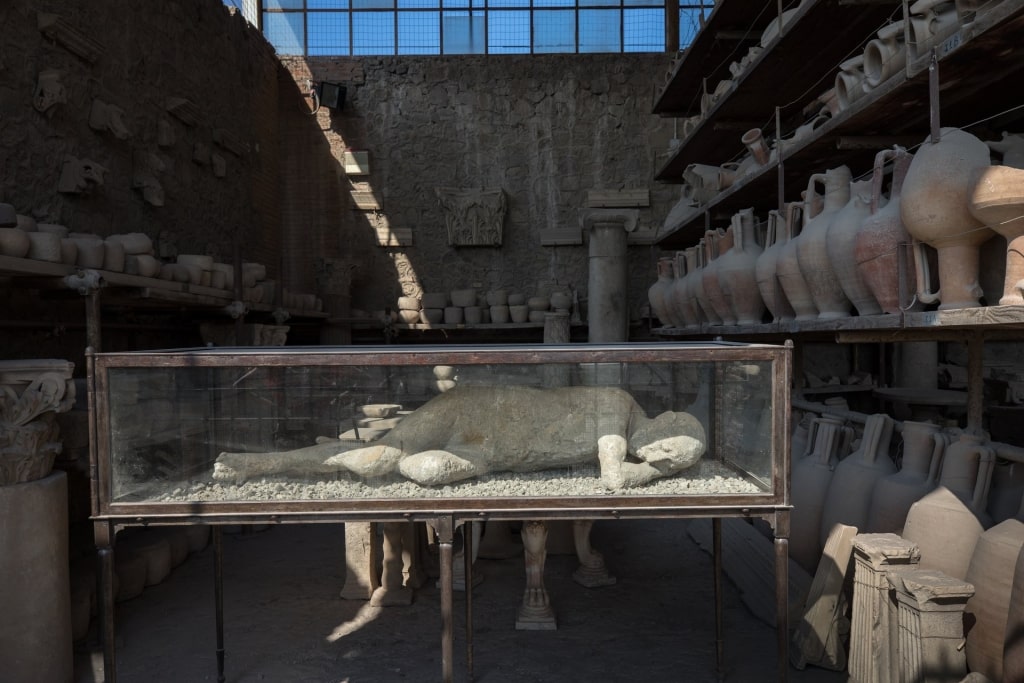
Pompeii
Once uncovered, the world was stunned by how well Pompeii had been preserved in its final moments. You will be too, wandering the streets of this vast open-air museum, which is perhaps the most immersive historical experience one can have. Take a guided tour and walk in the footsteps of the victims’ daily lives—it’s summer in Italy seen through its most thoughtful lens.
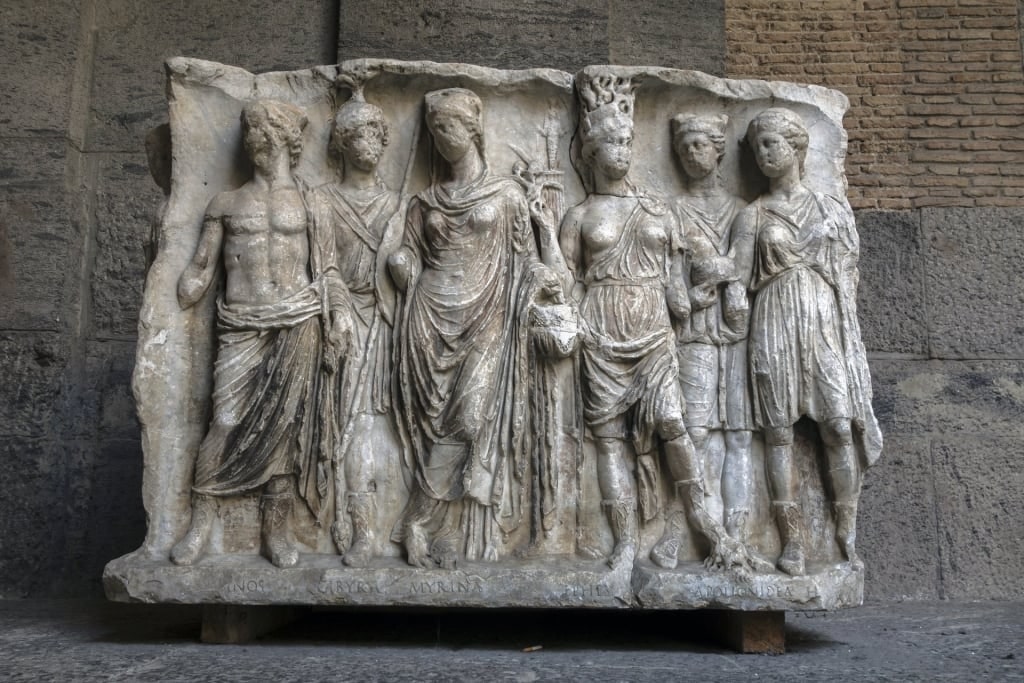
Naples National Archaeological Museum
If you have time, swing by the excellent Naples National Archaeological Museum for some more pieces of the Pompeii puzzle, including statues and frescos rescued from the site to aid in their preservation.
Read: Best Summer Destinations in Europe
Step into the Sacred Shade of Florence’s Duomo
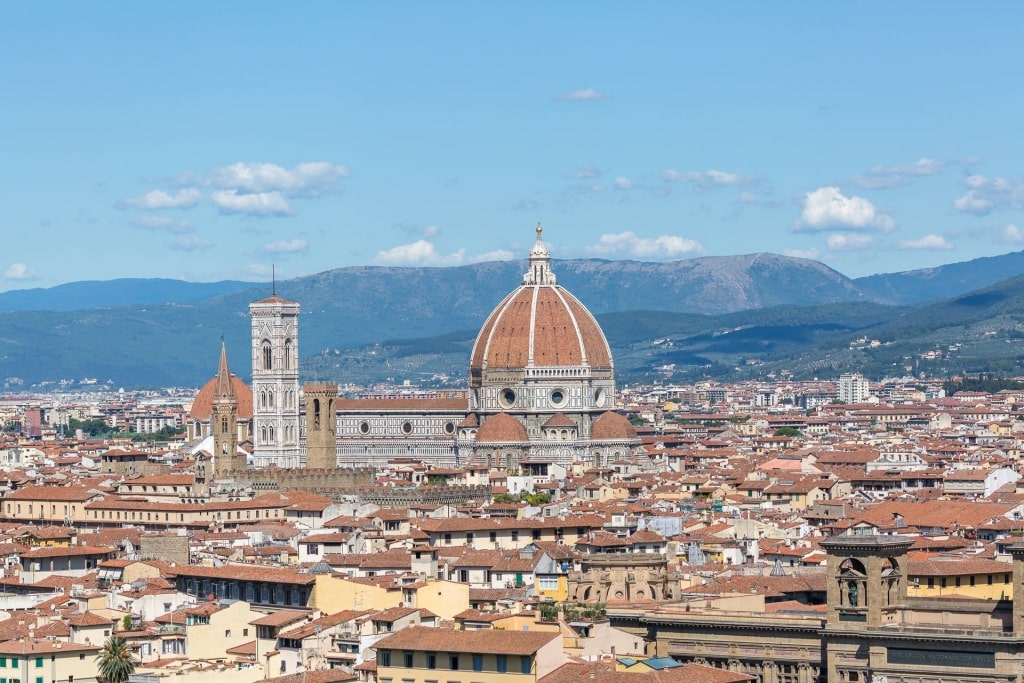
Duomo, Florence
From the perspective of the lush Tuscan hills surrounding the Renaissance capital of Florence, the Cattedrale Santa Maria del Fiore rises like a hot air balloon from among the terracotta rooftops.
Walking near to Florence’s duomo—to give the building its everyday monicker—you’re struck by its luminous nature. Its exterior white, green, and red marble inlay seems to emanate a gentle light. Wander inside, and the sheer scale of that dome hits home. Completed by the architect Filippo Brunelleschi in 1461, it was the largest in Europe at the time of its construction.
It is possible to ascend the 463 steps to the lantern crowning the dome (during construction, Brunelleschi wisely brought his workers their lunch rather than have them exhaust themselves by making too many trips to ground level). The views at the top are undeniably worth the hike, as well as the close-up perspective of Giorgio Vasari’s magnificent frescos decorating the dome’s interior.
Read: Two Days in Florence

Duomo, Florence
If the climb sounds a little daunting, don’t fret: this is Florence, after all, a museum director’s fever dream of astounding Renaissance art and architecture. There’s plenty available to see with no stairs to climb. If you’re set on seeing more of the duomo, one way of communing with its treasures is to make your way to the Museo dell’Opera del Duomo.
One of the best art museums in Italy, Museo dell’Opera del Duomo recently re-opened after an expensive two-year refurbishment. Inside, you can explore the world’s largest collection of Florentine sculptures from the Medieval and Renaissance periods, as well as the original medieval façade of the Duomo, the museum’s centerpiece.
Dismantled into 100 fragments in the late 16th century, the façade is one of the great works of art that never was. It comprises 40 statues, intricate mosaic inlay, and a galaxy of other sculpted elements.
Experience all of these unforgettable experiences and more on a cruise to Italy. From world-renowned architecture and ancient landmarks to incredible natural vistas, Italy is a magnificent place to visit during summer.
Browse our cruise itineraries online and book an incredible vacation in the Mediterranean.
